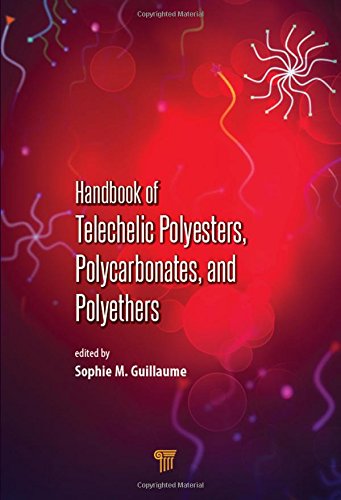

Most ebook files are in PDF format, so you can easily read them using various software such as Foxit Reader or directly on the Google Chrome browser.
Some ebook files are released by publishers in other formats such as .awz, .mobi, .epub, .fb2, etc. You may need to install specific software to read these formats on mobile/PC, such as Calibre.
Please read the tutorial at this link: https://ebookbell.com/faq
We offer FREE conversion to the popular formats you request; however, this may take some time. Therefore, right after payment, please email us, and we will try to provide the service as quickly as possible.
For some exceptional file formats or broken links (if any), please refrain from opening any disputes. Instead, email us first, and we will try to assist within a maximum of 6 hours.
EbookBell Team

4.7
56 reviewsTelechelic polymers have garnered a great deal of scientific interest due to their reactive chain-end functions. This comprehensive book compiles and details the basic principles of and cutting-edge research in telechelic polyesters, polycarbonates, and polyethers, ranging from synthesis to applications. It discusses general strategies toward telechelic polymers, centered on the fundamental aspects of polycondensation reactions, of cationic, anionic, coordination-insertion, and activated monomer mechanisms of the metal-, enzyme-, or otherwise organocatalyzed ring-opening polymerization of cyclic monomers, and of postpolymerization chemical modification methods of polymer precursors. All main classes of polymers are covered separately, comprising polyhydroxyalkanoates, poly(ε-caprolactone)s, poly(lactic acid)s, polylactides, polycarobnates, and polyethers, including synthetic approaches as well as some illustrative, up-to-date examples and uses. The book also addresses applications of hydroxyl, thiol, amino, or acrylate/methacrylate end-capped polymers as starting materials for the preparation of diverse polymer architectures ranging from block, graft, and star-shaped polymers and micelles to precursors for ATRP macroinitiators, polyurethane copolymers, shape-memory polymers, or nanosized drug delivery systems. The book will appeal to advanced undergraduate- and graduate-level students of polymer science; researchers in macromolecular science, especially those with an interest in functional and reactive polymers; and polymer chemists in academia and industry.